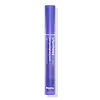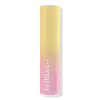What's inside
What's inside
 Key Ingredients
Key Ingredients

 Benefits
Benefits

 Concerns
Concerns

 Ingredients Side-by-side
Ingredients Side-by-side

Water
Skin ConditioningPropanediol
SolventTromethamine
BufferingGlycolic Acid
Buffering3-O-Ethyl Ascorbic Acid
Skin Conditioning1,2-Hexanediol
Skin ConditioningTranexamic Acid
AstringentNiacinamide
SmoothingSodium Citrate
BufferingGlycyrrhiza Glabra Root Extract
BleachingAcetyl Glucosamine
Skin ConditioningDipotassium Glycyrrhizate
HumectantSalix Alba Bark Extract
AstringentCurcuma Longa Root Extract
MaskingBeta-Glucan
Skin ConditioningAloe Barbadensis Leaf Extract
EmollientCorallina Officinalis Extract
Skin ConditioningGardenia Jasminoides Fruit Extract
Cosmetic ColorantMelia Azadirachta Flower Extract
Skin ConditioningMelia Azadirachta Leaf Extract
Skin ConditioningOcimum Sanctum Leaf Extract
Skin ConditioningHydrolyzed Hyaluronic Acid
HumectantGlycerin
HumectantAllantoin
Skin ConditioningPentylene Glycol
Skin ConditioningHydroxyethylcellulose
Emulsion StabilisingCellulose Gum
Emulsion StabilisingButylene Glycol
HumectantLactobacillus Ferment
Skin ConditioningSodium Benzotriazolyl Butylphenol Sulfonate
UV AbsorberButeth-3
SolventTributyl Citrate
SolventTris(Tetramethylhydroxypiperidinol)Citrate
StabilisingAlcohol
AntimicrobialTetrasodium Iminodisuccinate
Water, Propanediol, Tromethamine, Glycolic Acid, 3-O-Ethyl Ascorbic Acid, 1,2-Hexanediol, Tranexamic Acid, Niacinamide, Sodium Citrate, Glycyrrhiza Glabra Root Extract, Acetyl Glucosamine, Dipotassium Glycyrrhizate, Salix Alba Bark Extract, Curcuma Longa Root Extract, Beta-Glucan, Aloe Barbadensis Leaf Extract, Corallina Officinalis Extract, Gardenia Jasminoides Fruit Extract, Melia Azadirachta Flower Extract, Melia Azadirachta Leaf Extract, Ocimum Sanctum Leaf Extract, Hydrolyzed Hyaluronic Acid, Glycerin, Allantoin, Pentylene Glycol, Hydroxyethylcellulose, Cellulose Gum, Butylene Glycol, Lactobacillus Ferment, Sodium Benzotriazolyl Butylphenol Sulfonate, Buteth-3, Tributyl Citrate, Tris(Tetramethylhydroxypiperidinol)Citrate, Alcohol, Tetrasodium Iminodisuccinate
Helianthus Annuus Seed Oil
EmollientPolyglyceryl-2 Triisostearate
EmulsifyingEuphorbia Cerifera Wax
Caprylic/Capric Triglyceride
MaskingButyrospermum Parkii Butter
Skin ConditioningSynthetic Wax
AbrasiveMicrocrystalline Wax
Emulsion StabilisingPrunus Amygdalus Dulcis Oil
Skin ConditioningOctyldodecanol
EmollientPhenoxyethanol
Preservative1,2-Hexanediol
Skin ConditioningEthylhexylglycerin
Skin ConditioningPentaerythrityl Tetra-Di-T-Butyl Hydroxyhydrocinnamate
AntioxidantWater
Skin ConditioningButylene Glycol
HumectantGlycerin
HumectantNiacinamide
SmoothingAscorbic Acid
AntioxidantAvena Sativa Meal Extract
SoothingLepidium Meyenii Root Extract
Skin ConditioningMyrtus Communis Extract
AstringentSalvia Hispanica Seed Extract
EmollientAdansonia Digitata Seed Extract
Skin ConditioningCamellia Sinensis Leaf Extract
AntimicrobialViola Tricolor Extract
EmollientPrunus Domestica Fruit Extract
MoisturisingOphiopogon Japonicus Root Extract
Skin ConditioningSaussurea Involucrata Extract
HumectantOryza Sativa Bran Extract
Skin ConditioningAloe Barbadensis Leaf Extract
EmollientNymphaea Alba Root Extract
Skin ConditioningLens Esculenta Seed Extract
Skin ProtectingNelumbo Nucifera Root Extract
Skin ConditioningHibiscus Esculentus Fruit Extract
Skin ConditioningLithospermum Erythrorhizon Root Extract
Skin ConditioningDioscorea Japonica Root Extract
Skin ConditioningAnthemis Nobilis Flower Extract
MaskingCocos Nucifera Fruit Extract
EmollientSalicornia Herbacea Extract
Skin ConditioningAstragalus Membranaceus Root Extract
EmollientCorchorus Olitorius Leaf Extract
Skin ConditioningGrifola Frondosa Fruiting Body Extract
EmollientHyaluronic Acid
HumectantTremella Fuciformis Extract
HumectantParfum
MaskingCI 77891
Cosmetic ColorantCI 77492
Cosmetic ColorantHelianthus Annuus Seed Oil, Polyglyceryl-2 Triisostearate, Euphorbia Cerifera Wax, Caprylic/Capric Triglyceride, Butyrospermum Parkii Butter, Synthetic Wax, Microcrystalline Wax, Prunus Amygdalus Dulcis Oil, Octyldodecanol, Phenoxyethanol, 1,2-Hexanediol, Ethylhexylglycerin, Pentaerythrityl Tetra-Di-T-Butyl Hydroxyhydrocinnamate, Water, Butylene Glycol, Glycerin, Niacinamide, Ascorbic Acid, Avena Sativa Meal Extract, Lepidium Meyenii Root Extract, Myrtus Communis Extract, Salvia Hispanica Seed Extract, Adansonia Digitata Seed Extract, Camellia Sinensis Leaf Extract, Viola Tricolor Extract, Prunus Domestica Fruit Extract, Ophiopogon Japonicus Root Extract, Saussurea Involucrata Extract, Oryza Sativa Bran Extract, Aloe Barbadensis Leaf Extract, Nymphaea Alba Root Extract, Lens Esculenta Seed Extract, Nelumbo Nucifera Root Extract, Hibiscus Esculentus Fruit Extract, Lithospermum Erythrorhizon Root Extract, Dioscorea Japonica Root Extract, Anthemis Nobilis Flower Extract, Cocos Nucifera Fruit Extract, Salicornia Herbacea Extract, Astragalus Membranaceus Root Extract, Corchorus Olitorius Leaf Extract, Grifola Frondosa Fruiting Body Extract, Hyaluronic Acid, Tremella Fuciformis Extract, Parfum, CI 77891, CI 77492
 Reviews
Reviews

Ingredients Explained
These ingredients are found in both products.
Ingredients higher up in an ingredient list are typically present in a larger amount.
1,2-Hexanediol is a synthetic liquid and another multi-functional powerhouse.
It is a:
- Humectant, drawing moisture into the skin
- Emollient, helping to soften skin
- Solvent, dispersing and stabilizing formulas
- Preservative booster, enhancing the antimicrobial activity of other preservatives
Aloe Barbadensis Leaf Extract is an extract of the leaves of the aloe, Aloe barbadensis, Liliaceae.
Aloe is one of the most well-known natural soothing ingredients, and for good reason. It’s full of water and has a cooling, calming effect on the skin, especially when it’s sunburned, itchy, or irritated. Aloe also helps your skin stay hydrated and smooth by mimicking what healthy skin naturally produces. On top of that, it contains vitamins and nutrients that support skin recovery.
It doesn’t protect you from the sun, but it can help your skin bounce back after too much time in it.
Let’s get into the details:
Aloe contains antioxidant Vitamins A, C, and E, which help fight off free radicals (unstable molecules from things like pollution that can damage your skin).
It’s also rich in polysaccharides, which are natural sugars that help hydrate the skin by acting like the skin’s own moisturizing agents. These, along with other sugars like monosaccharides, help form a protective barrier that locks in moisture.
Aloe works as both a humectant and an emollient. That means it draws water into the skin (humectant) and helps trap it there (emollient), making it an effective natural moisturizer.
You’ll also find a mix of other skin-supporting ingredients in aloe, including folic acid, choline, calcium, amino acids, fatty acids, and even Vitamin B12.
Out of the 420+ species of aloe, Aloe barbadensis is the most widely used in skincare products thanks to its gentle yet effective properties.
There are over 420 species of aloe but Aloe Barbadensis is the most commonly used for topical products.
Learn more about Aloe Barbadensis Leaf ExtractButylene Glycol (or BG) is used within cosmetic products for a few different reasons:
Overall, Butylene Glycol is a safe and well-rounded ingredient that works well with other ingredients.
Though this ingredient works well with most skin types, some people with sensitive skin may experience a reaction such as allergic rashes, closed comedones, or itchiness.
Learn more about Butylene GlycolGlycerin is already naturally found in your skin. It helps moisturize and protect your skin.
A study from 2016 found glycerin to be more effective as a humectant than AHAs and hyaluronic acid.
As a humectant, it helps the skin stay hydrated by pulling moisture to your skin. The low molecular weight of glycerin allows it to pull moisture into the deeper layers of your skin.
Hydrated skin improves your skin barrier; Your skin barrier helps protect against irritants and bacteria.
Glycerin has also been found to have antimicrobial and antiviral properties. Due to these properties, glycerin is often used in wound and burn treatments.
In cosmetics, glycerin is usually derived from plants such as soybean or palm. However, it can also be sourced from animals, such as tallow or animal fat.
This ingredient is organic, colorless, odorless, and non-toxic.
Glycerin is the name for this ingredient in American English. British English uses Glycerol/Glycerine.
Learn more about GlycerinNiacinamide is a multitasking form of vitamin B3 that strengthens the skin barrier, reduces pores and dark spots, regulates oil, and improves signs of aging.
And the best part? It's gentle and well-tolerated by most skin types, including sensitive and reactive skin.
You might have heard of "niacin flush", or the reddening of skin that causes itchiness. Niacinamide has not been found to cause this.
In very rare cases, some individuals may not be able to tolerate niacinamide at all or experience an allergic reaction to it.
If you are experiencing flaking, irritation, and dryness with this ingredient, be sure to double check all your products as this ingredient can be found in all categories of skincare.
When incorporating niacinamide into your routine, look out for concentration amounts. Typically, 5% niacinamide provides benefits such as fading dark spots. However, if you have sensitive skin, it is better to begin with a smaller concentration.
When you apply niacinamide to your skin, your body converts it into nicotinamide adenine dinucleotide (NAD). NAD is an essential coenzyme that is already found in your cells as "fuel" and powers countless biological processes.
In your skin, NAD helps repair cell damage, produce new healthy cells, support collagen production, strengthen the skin barrier, and fight environmental stressors (like UV and pollution).
Our natural NAD levels start to decline with age, leading to slower skin repair, visible aging, and a weaker skin barrier. By providing your skin niacinamide, you're recharging your skin's NAD levels. This leads to stronger, healthier, and younger looking skin.
Another name for vitamin B3 is nicotinamide. This vitamin is water-soluble and our bodies don't store it. We obtain Vitamin B3 from either food or skincare. Meat, fish, wheat, yeast, and leafy greens contain vitamin B3.
The type of niacinamide used in skincare is synthetically created.
Learn more about NiacinamideWater. It's the most common cosmetic ingredient of all. You'll usually see it at the top of ingredient lists, meaning that it makes up the largest part of the product.
So why is it so popular? Water most often acts as a solvent - this means that it helps dissolve other ingredients into the formulation.
You'll also recognize water as that liquid we all need to stay alive. If you see this, drink a glass of water. Stay hydrated!
Learn more about Water